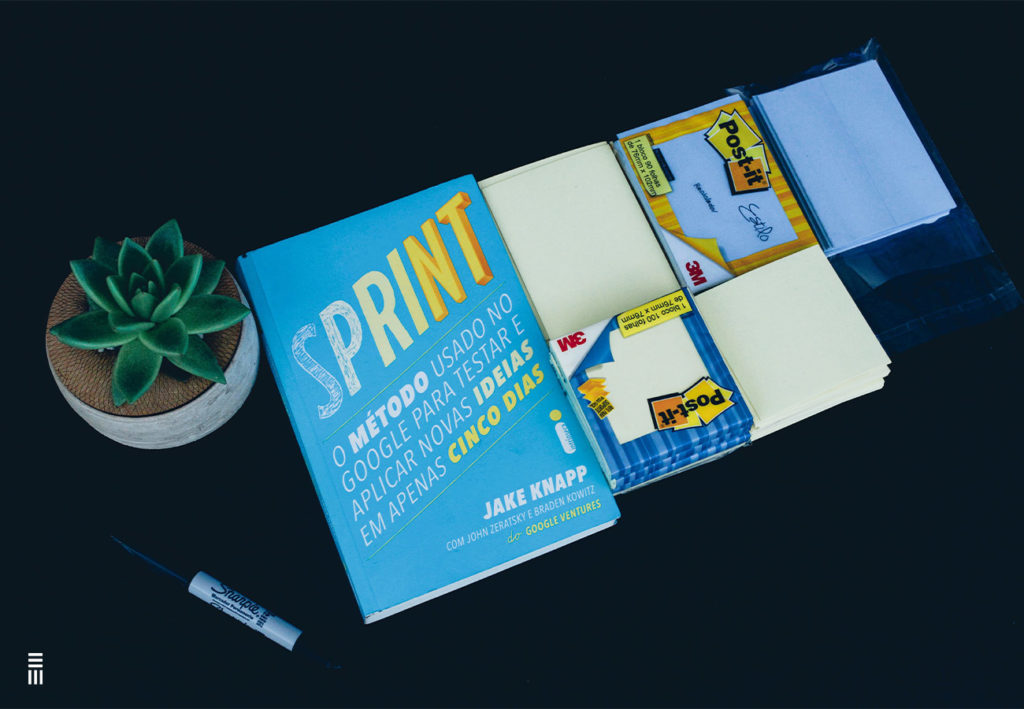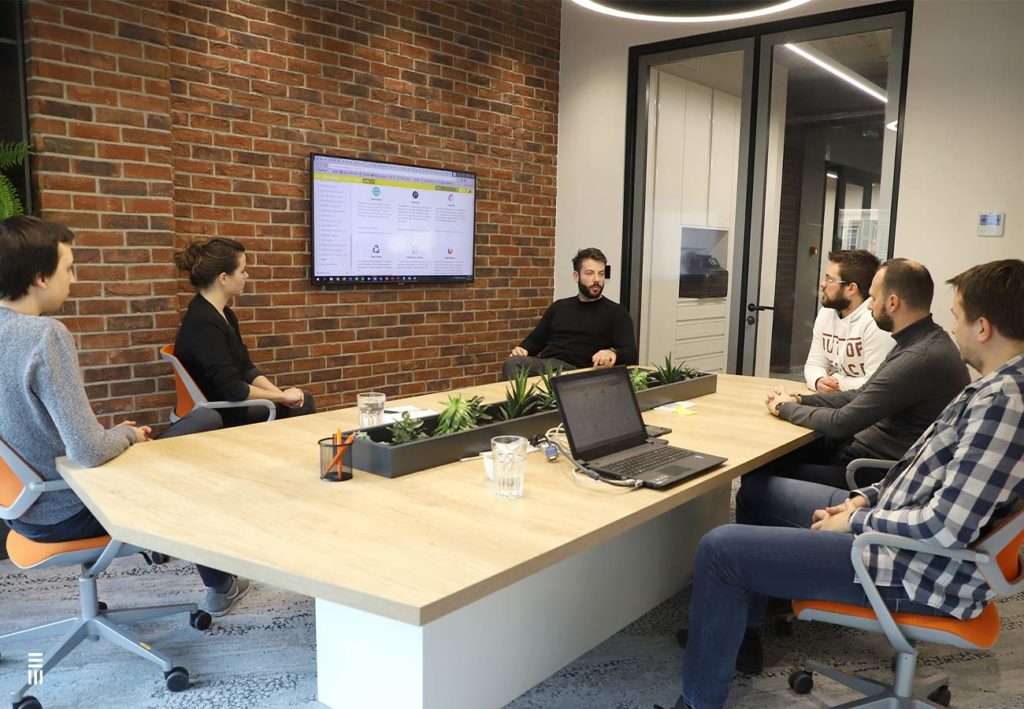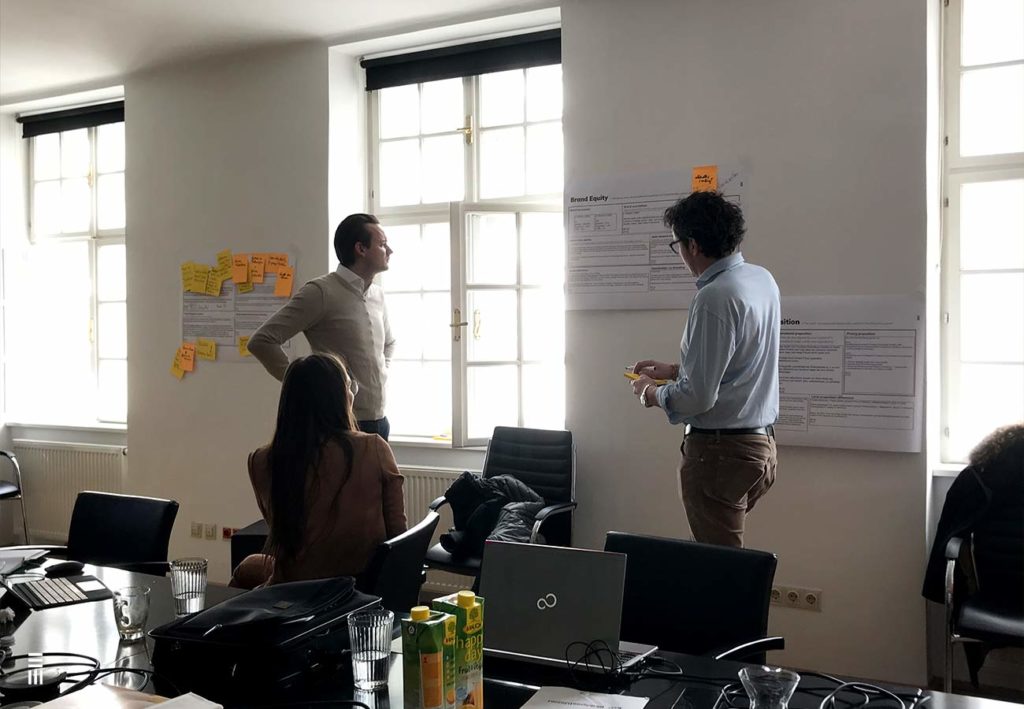Co-creation – The most creative ideas emerge in close cooperation

What is creativity? What is innovation? There are many different definitions, but one thing is sure: artists and entrepreneurs need both on a daily basis. Today’s international day of Creativity and Innovation draws attention to how important these two elements are for economic, social and cultural development. For these reasons, Emakina strives for the best ideas for every project and every client.
Co-creation and Design sprint
For the most innovative results, we actively rely on co-creation in workshops: a method that gathers people from different backgrounds and with different skills to develop a customer-centric solution. The client’s teams and ours work side by side to share insights from different perspectives. This close collaboration fosters a shared understanding of the future project as everyone was involved.
In a design sprint, we develop the right solution. Within five days we jointly define goals, get to know the client’s employees, customers and company. Together we define problems and pain points, we generate ideas and prototypes and test them on real users.
Various methods are used to ensure the user-centered focus, such as defining personas and developing user stories. Design sprints are not limited to a specific industry or service/product. Regardless of the business model, the user is at the centre of the development.
Would you like to learn more? Contact us!
Finding the right ideas
An essential part of the design sprint is the brainstorming phase. This phase requires a lot of creativity and is a key innovation driver. But how do we get the creativity out of our teams’ heads and into the development of new ideas? There are four approaches that you may want to consider using in your next brainstorming session.

1. Visual thinking
Material: pens, paper
Method: Drawing ideas
Visual Thinking means drawing your thoughts on a paper. Everyone knows the saying: “A picture is worth a thousand words”. With simple sketches, complex issues can often be visualized quicker than explained. You can also record your ideas during your brainstorming sessions as visualisation makes it possible to approach a problem differently. This may lead you to explore new perspectives.
2. Crazy Eight
Material: Pens, paper, colourful sticky notes, stopwatch
Time: 8 minutes + evaluation of the ideas afterwards
Method: 8 minutes – 8 ideas
The paper in front of each participant in the brainstorming session is divided into eight equal-sized boxes. Each person fills each box in one minute with an idea that answers a given question.
At the end of the eight minutes, each idea is explained and evaluated. Every participant has two to three colourful sticky notes which are used as a vote for the other ideas. This way, the idea with the most votes stands-out visually.
The time pressure has an influence on creativity that should not be underestimated. “Crazy Eight always leads to fresh ideas at a very fast pace. Eight different ideas for the very same question force us to discuss unusual solutions.” says Rainer Friedl, Managing Director, Emakina CEE.
3. Mirror Thinking
Material: sticky notes, pens, flipchart
Time: 15 minutes
Method: Ways the company would never go
Take two minutes to explain the problem you want to approach and write it on the flipchart for all to see. Over the next four minutes, think about the ways your company would normally solve this problem and write them on sticky notes. After that, you have five minutes to write down all the unusual, crazy ideas you can think of that your company would never do. In the last four minutes, these ideas are shared and discussed to see if they could benefit the company.
By having all participants think of completely new ways of solving problems that their own company would not think of, interesting new perspectives come to light.
4. The 5-Why Method
Material: Flipchart, pens
Method: Question everything
The principle of this method is questioning five times a question or a fact: “Why is that?” Example:
1. Why was the feature not implemented on time? -> Because certain updates were not delivered by the deadline.
2. Why were the updates not delivered on time? -> Because the developers were still working on the previous project.
3. Why were the developers working on the previous project? -> Because a new member of the team did not know the processes yet.
4. Why didn’t the new member know the processes? -> etc…
You can see the pattern. This method also works with the opposite: “Why is something not this way?”. Most of the time, the answers to the why are not as simple as in our example but require careful consideration and knowledge of the situation. The why questions lead you to the root of the problem, which may lie somewhere else entirely than originally assumed. It is through this conscious questioning that you think of the why, which is often lost in the day-to-day work life.
Regardless of the chosen method, spirit and dynamics in the team contribute to successful idea generation. Take enough time for your brainstorming sessions and don’t let yourself be distracted by other tasks. Even in design sprints, the participants should only focus on the workshop for five days. This is precisely why they are so effective.

After the brainstorming and before the implementation
With the completion of the design sprint, the work is of course far from done – but a big part of it already is. You know in which direction the implementation should be taken. During the next steps it is important not to lose the user-centric mindset you have worked so hard on. Emakina relies on agile methods in its implementation to develop as flexibly and quickly as possible. Because our promise is: We get things #DONE
Our recent blog posts
See all blogs-
How is AI’s synthetic data enhancing User Experience Research? Technology

-
Web3.AI Rising : How new technology can add value to your business

-
How generative AI helped us create an e-commerce app – with personalised content – in just 2 weeks Technology

-
Can you build a foodie app in 3 days using Generative AI? (Spoiler alert: yes!)

